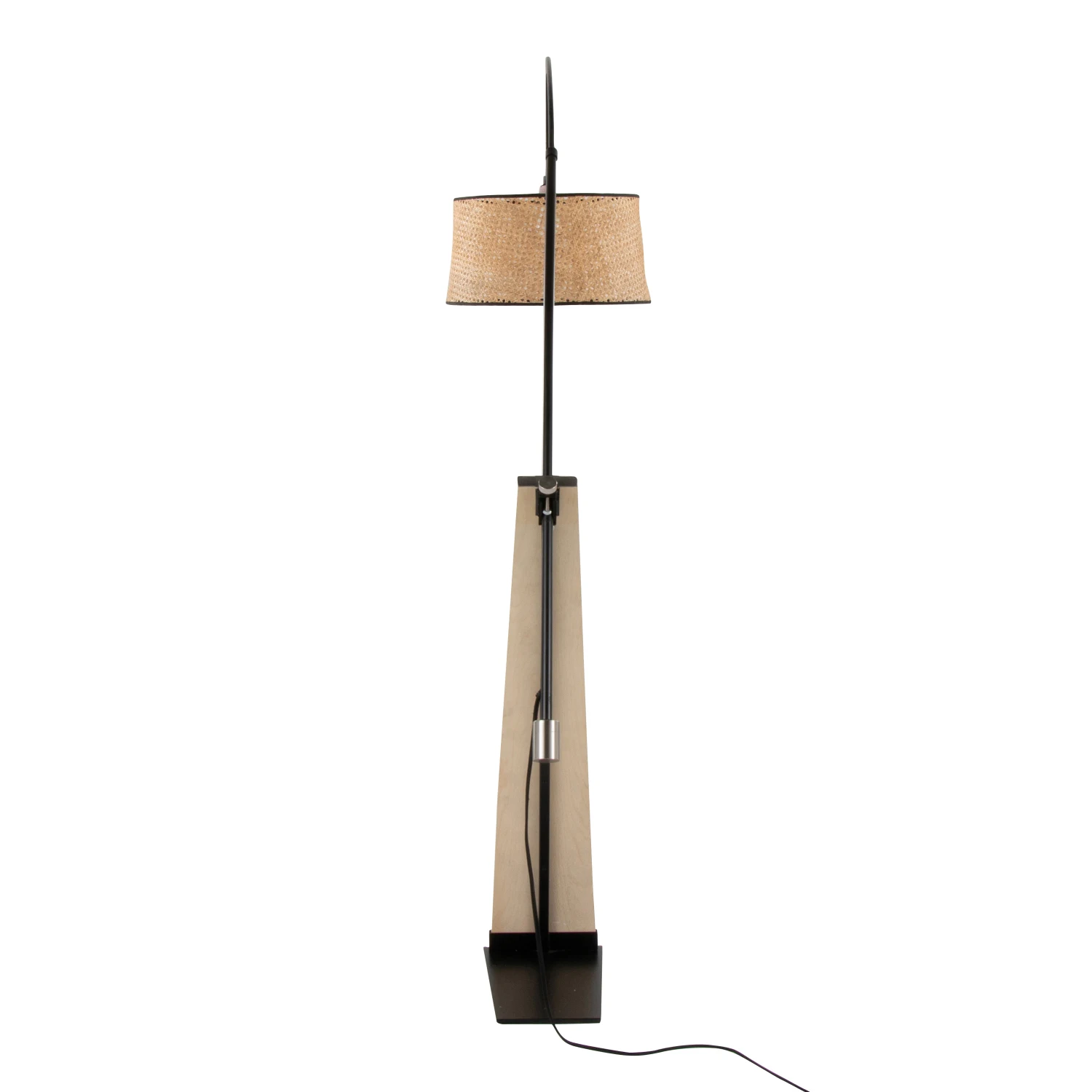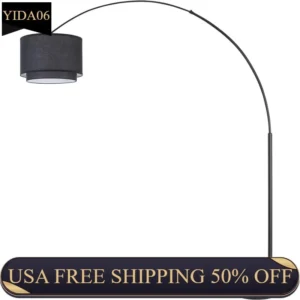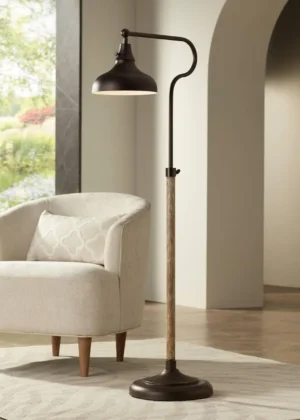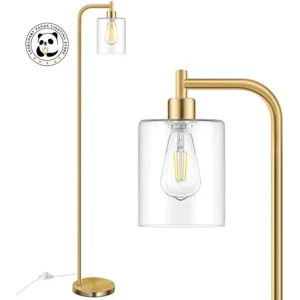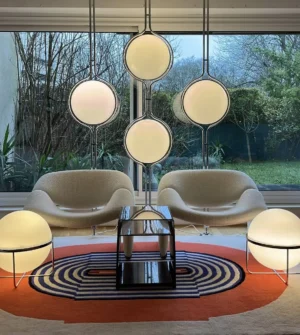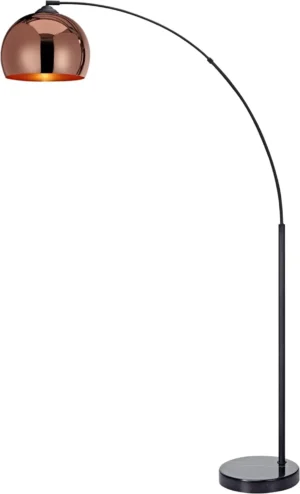The Enduring Appeal of Mid-Century Arc Lamps in Interior Design
Mid-century arc lamps represent a perfect marriage of form and function in lighting design. These distinctive fixtures are characterized by their curved, swooping arm that extends from a weighted base, allowing the light source to hang suspended over furniture without ceiling installation. What truly defines a mid-century arc floor lamp is this dramatic curved silhouette combined with materials like polished metals, marble bases, and simple dome or globe-shaped shades.
The arc lamp as we know it today traces its origins to the revolutionary Arco lamp designed in 1962 by the Castiglioni brothers. This iconic piece, with its marble base and arching stainless steel arm, forever changed how designers thought about floor lighting. Rather than being confined to corners or standing directly beside furniture, these lamps could reach into spaces, providing overhead illumination without ceiling fixtures.
Despite being created over six decades ago, mid-century arc lamps have demonstrated remarkable staying power in interior design. This endurance isn’t simply nostalgia—it speaks to the inherent versatility and visual impact these pieces offer. Their appeal lies in solving practical lighting challenges while simultaneously functioning as sculptural art pieces that anchor a room’s design.
The current resurgence of interest in mid-century vintage arc floor lamps reflects our continued appreciation for designs that balance aesthetic appeal with practical purpose. These pieces have been featured prominently in design publications and high-end interiors for decades, demonstrating their transcendence beyond fleeting trends.
What makes these lamps truly special is their dual identity—they’re simultaneously functional light sources and statement pieces that create visual interest through their sweeping curves and dramatic proportions. This duality helps explain why arc floor lamps are good choices for so many interior settings, from minimalist apartments to eclectic family homes.
Versatility Beyond Mid-Century: Integrating Arc Lamps Across Design Styles
While their name references mid-century modern aesthetics, these distinctive lamps have proven remarkably adaptable across various interior design approaches. Their enduring appeal lies in fundamental attributes—clean lines, simple geometry, quality materials, and functional versatility—that allow them to complement rather than compete with diverse style sensibilities.
Contemporary Minimalist
The sleek lines and unobtrusive presence of contemporary arc floor lamps make them perfect companions for minimalist interiors. In spaces defined by clean geometry and restrained color palettes, an arc lamp provides visual interest without clutter. The lamp’s simple form complements the minimalist philosophy of “less is more” while adding necessary task lighting over seating areas or dining tables without disrupting the room’s clean aesthetic.
Industrial
Industrial design celebrates raw materials and mechanical elements—qualities inherent in many arc lamps. Models with exposed hardware, visible counterweights, or unfinished metal finishes particularly enhance industrial spaces. The mechanical nature of the adjustable arm complements the utilitarian aesthetic while providing directional lighting for work areas or reading nooks.
Scandinavian
The functionality and clean lines of arc lamps align perfectly with Scandinavian design principles. When paired with warm woods, natural textiles, and a neutral color palette, an arc lamp adds a necessary metal element that prevents the space from feeling too soft. The lamp’s ability to provide overhead lighting without ceiling modifications is particularly valuable in Scandinavian interiors, which emphasize practical solutions and abundant illumination to combat northern latitudes’ limited natural light.
Transitional
Arc lamps excel in transitional spaces that blend traditional and contemporary elements. Their curved forms offer a softer alternative to strictly linear modern lighting while their metallic materials and mechanical function provide contemporary appeal. This balance makes them perfect mediators in rooms combining antique furniture with modern accessories.
Eclectic
In eclectic interiors, arc lamps can serve as unifying elements amid varied design styles. Their strong visual presence helps anchor eclectic spaces that might otherwise feel disjointed. Black arc floor lamps particularly excel in this environment, as their neutral color allows them to coordinate with diverse color schemes while their distinctive shape adds cohesion to the intentional mix of styles.
The finish choice significantly impacts how an arc lamp integrates with your existing décor. Brass brings warmth and pairs beautifully with rich colors and natural materials. Chrome creates a cooler, more contemporary feel that complements blue and gray tones. Black finishes offer versatility across nearly any color scheme while adding dramatic contrast.
Beyond aesthetics, arc lamps solve practical lighting challenges by providing overhead illumination without electrical work. This functional versatility makes them particularly valuable in rental properties or historic homes where ceiling modifications may be prohibited. Their ability to direct light precisely where needed without taking up valuable table space makes them practical choices for choosing the perfect arc floor lamp in various living situations.
Essential Design Principles: Scale, Balance & Proportion
When incorporating arc lamps into your interior design, understanding the principles of scale, balance, and proportion is essential for achieving a harmonious result. These considerations determine whether your lamp will serve as an elegant complement or an awkward distraction within your space.
The relationship between lamp scale and room dimensions fundamentally impacts design success. As a general rule, larger rooms with higher ceilings can accommodate more dramatic, oversized arc lamps with sweeping curves. Conversely, compact spaces require more restrained proportions to prevent the lamp from overwhelming the room.
Ceiling height represents a critical consideration when selecting an arc lamp:
– Minimum 8-foot ceilings for standard arc lamps
– 9-foot or higher ceilings ideal for dramatic, high-arching designs
– For lower ceilings (7-8 feet), select models with adjustable heights or shallower arcs
Proper proportions create visual harmony between the lamp and surrounding elements. Consider these guidelines:
– The lamp’s base should be proportional to its reach—generally, a 12-inch diameter base provides adequate stability for lamps extending 60-72 inches
– For general illumination, position the bottom of the shade approximately 8-9 feet from the floor
– For task lighting (reading, dining), lower the light source to 6-7 feet for more focused illumination
– Ensure horizontal reach extends far enough to center the light source over intended areas without stretching cords
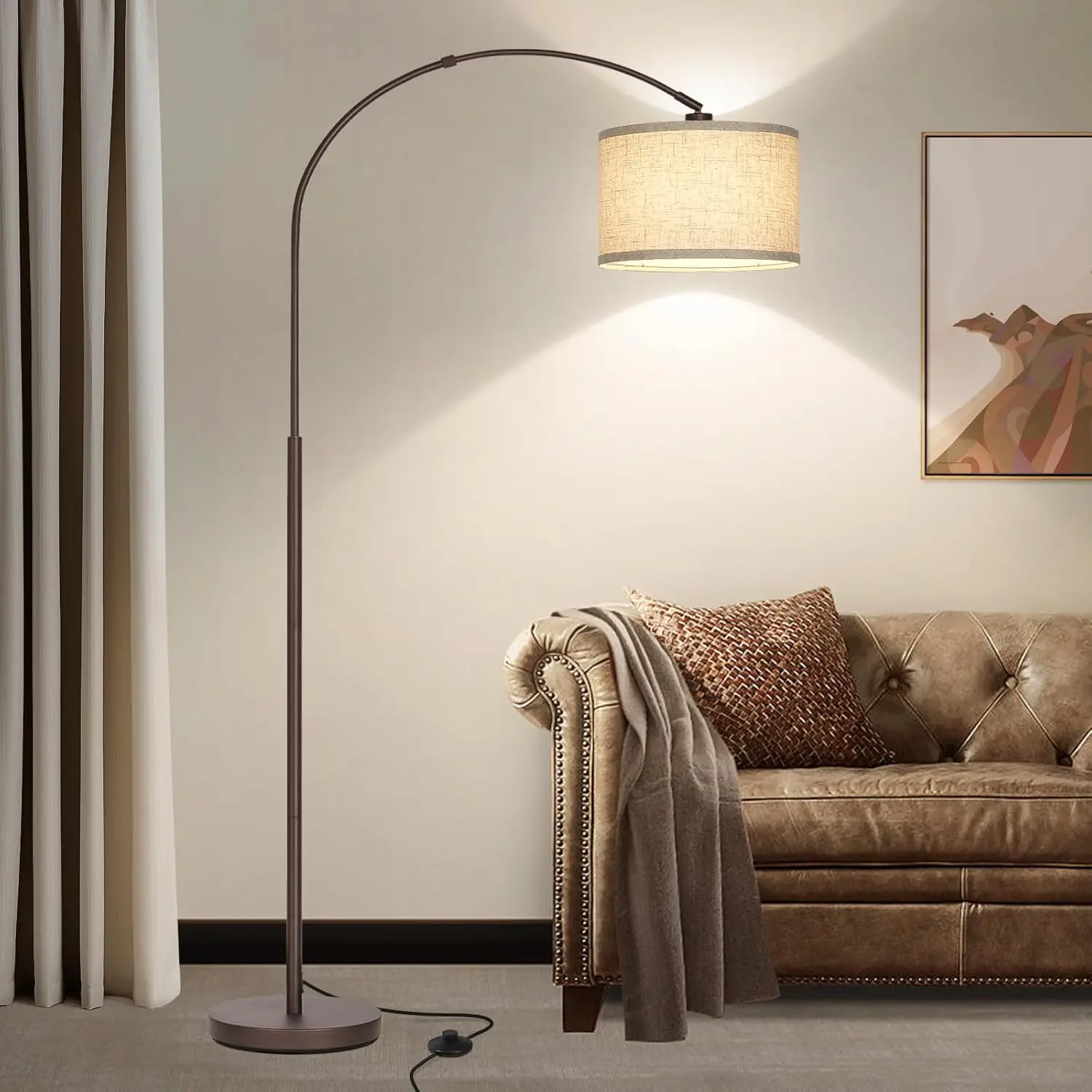
Understanding visual weight helps create balanced compositions. Arc lamps inherently create asymmetrical arrangements through their extended reach. To maintain equilibrium, consider:
– Positioning the lamp’s base on the visually “lighter” side of a room to counterbalance heavier furniture
– Using the lamp to balance a room with asymmetrical architecture
– Ensuring the arc’s direction complements the room’s natural flow rather than disrupting it
The perfect arc floor lamp height varies based on intended use. For conversation areas, the bottom of the shade should sit approximately 72 inches from the floor, allowing clear sightlines across seating arrangements. For dining areas, position the shade 30-36 inches above the table surface to provide adequate illumination without glare. Reading lamps benefit from more precise positioning—typically 16-18 inches to the side and slightly behind the reader’s shoulder.
By carefully considering these scale, balance, and proportion principles, you’ll create an intentional, harmonious relationship between your arc lamp and the surrounding space.
Strategic Placement: Optimizing Arc Lamp Positions in Key Living Spaces
Understanding where to position arc lamps in different rooms can transform both the functionality and aesthetic appeal of your spaces. Strategic placement maximizes their practical lighting benefits while showcasing their sculptural beauty.
Living Room Placement
The living room offers multiple opportunities for effective arc lamp placement:
– Position beside sofas with the base 16-24 inches from the furniture edge and the arm extending over the seating area
– For sectionals, place the base at the outer corner with the arm extending over the longest section
– Create dedicated reading corners by positioning the lamp 12-16 inches behind and to the side of an accent chair
– In open floor plans, use the lamp to visually define conversation areas or activity zones
– Direct the arc perpendicular to main traffic paths to prevent collisions
– For media viewing, position to eliminate screen glare while providing ambient light
The versatility of best arc lamps for living rooms makes them ideal for these multifunctional spaces. They can simultaneously highlight architectural features, illuminate conversation areas, and provide task lighting for reading or hobbies.
Dining Room Strategies
Dining spaces benefit from thoughtfully positioned arc lamps that enhance both meals and conversations:
– Select a lamp with a reach approximately two-thirds the length of your dining table
– For rectangular tables, position the base near a short end with the arm extending along the table’s length
– Center the light over circular tables, positioning the base where it won’t interfere with seating
– Adjustable arc floor lamps provide flexibility for different dining activities—higher for casual dining, lower for intimate dinner parties
– For rectangular tables longer than 6 feet, consider two complementary lamps positioned at opposite ends
Bedroom Applications
Arc lamps offer elegant alternatives to traditional bedroom lighting:
– Replace bulky bedside table lamps by positioning an arc lamp base behind the nightstand with the arm extending over the bed
– Create a reading sanctuary by pairing an arc lamp with a comfortable chair in a bedroom corner
– Illuminate dressing areas by positioning the lamp to cast even light without harsh shadows
Home Office Integration
Productive work environments require strategic lighting that an arc lamp can provide:
– Position the lamp to minimize screen glare and keyboard shadows—typically to the side opposite your dominant hand
– Adjust height and direction for optimal video call lighting, illuminating your face evenly without harsh shadows
– Use arc lamps with adjustable arms to transition between focused task lighting and broader ambient illumination
The versatility of arc lamps for reading corners makes them particularly valuable in home offices that double as reading retreats. By simply repositioning the lamp arm, you can transform task-focused workspace lighting into a cozy reading nook with warm, directed illumination.
Layered Lighting: Incorporating Arc Lamps into Comprehensive Lighting Schemes
Creating a well-designed lighting scheme requires understanding the concept of layered lighting—combining different light sources at various levels to create depth, functionality, and atmosphere. Arc lamps can play a pivotal role in this layered approach.
The three essential lighting layers include:
- Ambient Lighting: General illumination that fills the room
- Task Lighting: Focused light for specific activities like reading or cooking
- Accent Lighting: Decorative light that highlights architectural features or artwork
Arc lamps uniquely bridge these categories depending on their placement and specification. With their adjustable positioning and directional light, they can serve as task lighting when positioned over a reading chair or dining table. When fitted with a translucent shade and dimmer, they transform into ambient lighting that softly illuminates an entire seating area. Some models can even function as accent lighting, drawing attention to artwork or architectural elements through dramatic shadows and highlights.
When integrating arc lamps with other lighting elements, consider these complementary relationships:
– Pair with recessed ceiling fixtures that provide even background illumination
– Complement wall sconces that frame doorways or highlight artwork
– Balance with smaller table lamps to create lighting at multiple heights
3-light arc floor lamps offer particular versatility in layered lighting schemes. With multiple adjustable arms and light sources, they can simultaneously illuminate different areas of a room at varying intensities, effectively creating multiple lighting layers from a single fixture.
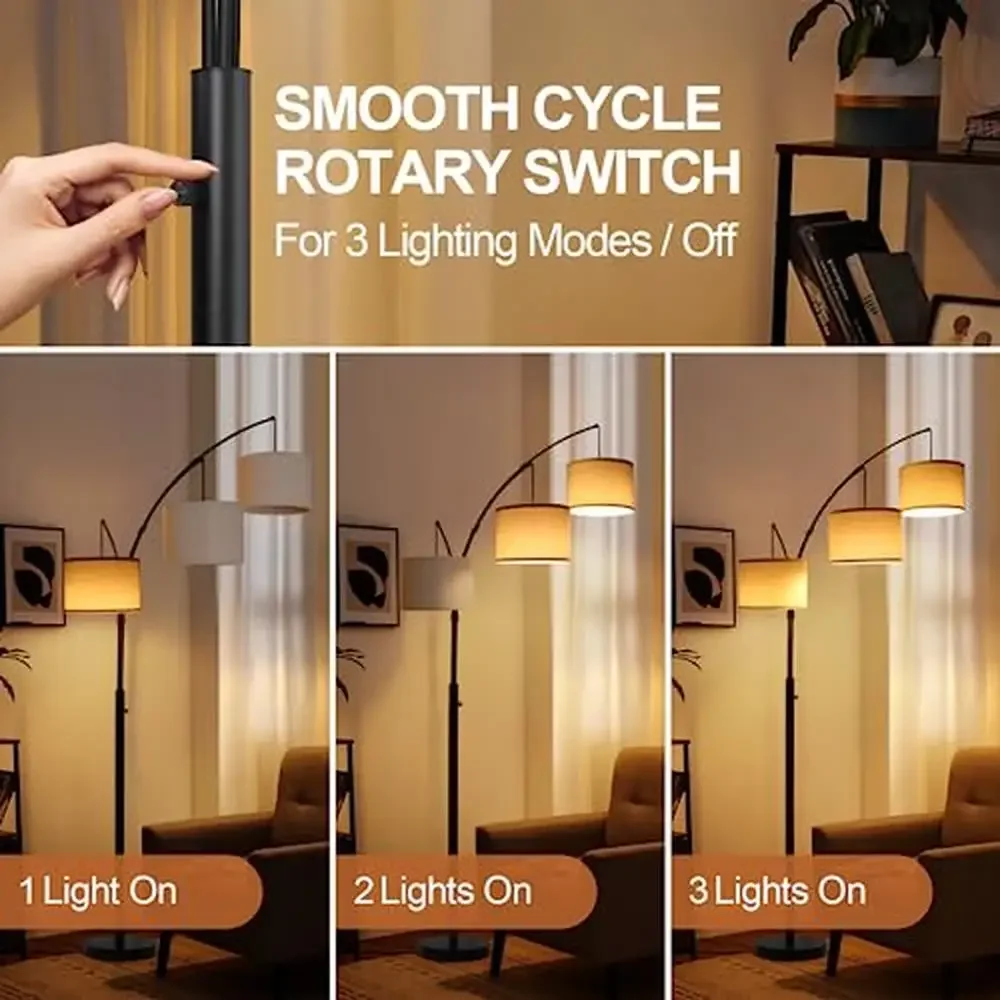
Creating distinct lighting zones becomes especially important in open-concept spaces. Arc lamps excel at defining functional areas through pools of light that visually separate dining, conversation, or reading zones without physical barriers.
For maximum versatility, select dimmable arc floor lamps that allow you to adjust light levels according to time of day and activity. A lamp that provides bright task lighting for reading can be dimmed to create ambient evening illumination for conversation or television viewing.
When planning your lighting arrangement, be mindful of competing light sources. Position arc lamps away from direct window light that might diminish their impact during daytime hours. Similarly, avoid creating conflicting shadows by considering how multiple light sources interact when simultaneously illuminated.
Furniture and Decor Pairings: Creating Harmonious Ensembles
Creating cohesive interior compositions requires thoughtful coordination between arc lamps and surrounding furniture. The right pairings enhance both elements, while mismatched combinations can create visual discord.
Seating Companions
The relationship between arc lamps and seating creates fundamental visual dynamics in living spaces:
– Low-profile, streamlined sofas allow arc lamps to make dramatic statements without competition
– Mid-century modern chairs with tapered legs echo the refined geometry of classic arc lamp designs
– Deep sectionals benefit from larger arc lamps with extended reaches that can illuminate multiple seating positions
– Club chairs with substantial profiles balance the visual weight of marble-based arc lamps
When matching arc lamps with furniture, consider not just style but proportional relationships. The lamp’s arc should clear the tallest seated person’s head by at least 10 inches, while the base should remain outside normal traffic patterns around seating areas.
Accent Furniture Coordination
Smaller furniture pieces play important supporting roles in arc lamp integration:
– Select coffee tables that allow clearance for the lamp’s arc—typically no taller than 18-20 inches
– Consider side tables with narrow profiles that complement rather than compete with substantial lamp bases
– Glass or acrylic accent tables create visual lightness that balances heavier lamp bases
– Nesting tables offer flexibility, allowing you to adjust furniture height relative to the lamp’s arc
Material and Texture Interplay
Material coordination creates cohesion between lamps and surrounding elements:
– Marble base arc floor lamps pair beautifully with other natural materials like wood, leather, and stone
– Balance metallic lamp finishes by incorporating similar metals in smaller accessories like picture frames or decorative objects
– Introduce textural contrast through soft textiles (wool throws, velvet pillows) that offset the lamp’s hard surfaces
– Living plants with organic forms create pleasing contrast against the lamp’s geometric precision
Color Strategies
Strategic color relationships enhance arc lamp integration:
– Metallic lamp finishes (brass, chrome) function as neutrals that complement most color schemes
– Use the lamp’s metal finish as inspiration for subtle accent colors throughout the room
– For dramatic effect, position colorful artwork or textiles near the lamp to create focal point pairings
– In minimalist spaces, a lamp with a distinctive finish can provide a perfect touch of color variation
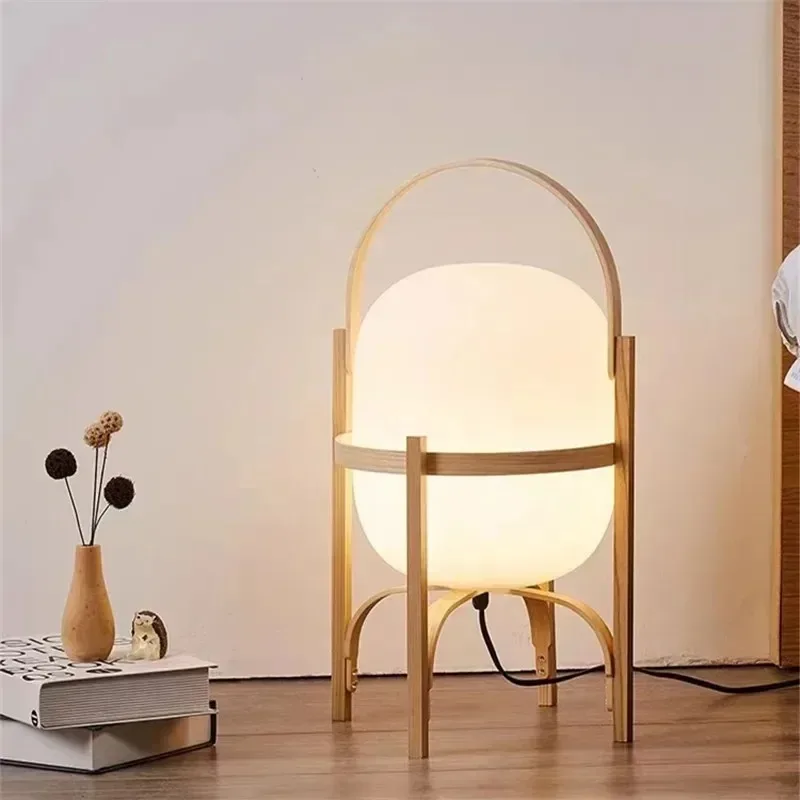
The most successful pairings maintain a balance between the lamp’s visual prominence and integration with surrounding elements. While arc lamps naturally attract attention through their distinctive forms, they should ultimately feel like cohesive elements within your overall design rather than disconnected showpieces.
Practical Considerations: Light Quality, Bulb Selection & Functionality
Beyond aesthetics, the practical performance of an arc lamp significantly impacts its success in your space. Understanding light quality, bulb options, and functional features ensures your lamp provides both beauty and utility.
Light Distribution Analysis
Arc lamps create distinctive light patterns depending on their design:
– Lamps with metal domes direct light downward in concentrated pools—ideal for reading or dining
– Translucent globe shades diffuse light more evenly throughout the space for general illumination
– Adjustable heads allow you to direct light precisely where needed
– The lamp’s height affects spread pattern—higher positioning creates broader, less intense illumination
Bulb Selection Criteria
Choosing the right bulb dramatically impacts both light quality and energy efficiency:
– LED arc floor lamps offer longevity and energy savings with minimal heat generation
– For reading or detailed tasks, select higher lumens (800-1200) with cooler color temperatures (4000-5000K)
– For ambient evening lighting, choose moderate lumens (400-800) with warmer color temperatures (2700-3000K)
– Look for high CRI (Color Rendering Index) ratings (90+) to ensure colors appear natural and vivid
– Dimmable bulbs provide maximum versatility for changing lighting needs
Functionality Enhancements
Several functional features significantly improve user experience:
– Height-adjustable arms accommodate different ceiling heights and lighting needs
– Rotating or swiveling shades direct light precisely where needed
– Counterbalanced arms maintain position without drooping over time
– Foot-operated floor switches allow convenient operation without bending
– In-line cord switches placed 12-24 inches from the base enable easy access
Cord Management Solutions
Address practical cord considerations for both safety and aesthetics:
– Plan lamp placement to minimize cord visibility and tripping hazards
– Consider flat cord options that slide more discreetly under rugs (with proper safety backing)
– Transparent or cord-colored cord covers blend with walls and flooring
– Position furniture strategically to naturally conceal cords without creating hazards
When evaluating arc lamps for your space, these practical elements deserve equal consideration alongside aesthetic factors. The most successful arc lamp installations balance visual appeal with thoughtful attention to what to look for in an arc floor lamp regarding functionality, light quality, and practical usability.
Arc Lamp Selection Guide: Making an Informed Purchase Decision
Contemporary Arc Floor Lamp, Large Arc Floor Lamp, Oversized Arched Floor Lamp
$460.63 Select options This product has multiple variants. The options may be chosen on the product pageAdjustable Arc Floor Lamp, Bronze Arc Floor Lamp
Price range: $440.95 through $558.52 Select options This product has multiple variants. The options may be chosen on the product pageBrass Arc Floor Lamp, Contemporary Arc Floor Lamp, LED Arc Floor Lamp
Price range: $490.72 through $522.04 Select options This product has multiple variants. The options may be chosen on the product pageChrome Arc Floor Lamp, LED Arc Floor Lamp
Price range: $304.95 through $1,210.40 Select options This product has multiple variants. The options may be chosen on the product pageContemporary Arc Floor Lamp, Large Arc Floor Lamp, Marble Base Arc Floor Lamp
$224.94 Select options This product has multiple variants. The options may be chosen on the product pageMid-Century Arc Floor Lamp, Wood Arc Floor Lamp
$230.86 Select options This product has multiple variants. The options may be chosen on the product page
Selecting the ideal arc lamp involves evaluating multiple specifications and features to ensure it meets your specific needs. This systematic approach helps you identify the perfect lamp for your space.
Essential Measurements to Consider
Precise dimensions significantly impact an arc lamp’s functionality in your space:
– Total height: Choose based on ceiling height (standard arc lamps require minimum 8-foot ceilings)
– Horizontal reach: Select a reach that properly centers light over your furniture (typically 30-60 inches)
– Base dimensions: Ensure adequate floor space for the base (typically 10-14 inches in diameter)
– Adjustment range: For versatile positioning, look for height adjustment of at least 12-18 inches
The perfect arc floor lamp guide suggests allowing at least 7 feet of clearance from floor to the bottom of the shade for spaces where people will walk underneath the arc. For focused activities like reading or dining, position the bottom of the shade approximately 36-42 inches above the surface being illuminated.
Material Quality Assessment
Material quality directly impacts both aesthetics and durability:
– Metal finishes should be consistently applied without pitting or uneven coloration
– Weighted bases should feel substantial and stable—quality marble bases typically weigh 15-20 pounds
– Joints and connections should operate smoothly without wobbling
– Shades should attach securely with even seams and consistent color
Mechanism Durability Indicators
Mechanical components determine long-term functionality:
– Counterbalance systems should hold position without drifting or requiring frequent adjustment
– Adjustment mechanisms should operate smoothly with minimal force
– Switch components should feel substantial with positive engagement
– Cord insulation should be flexible yet substantial with reinforcement at connection points
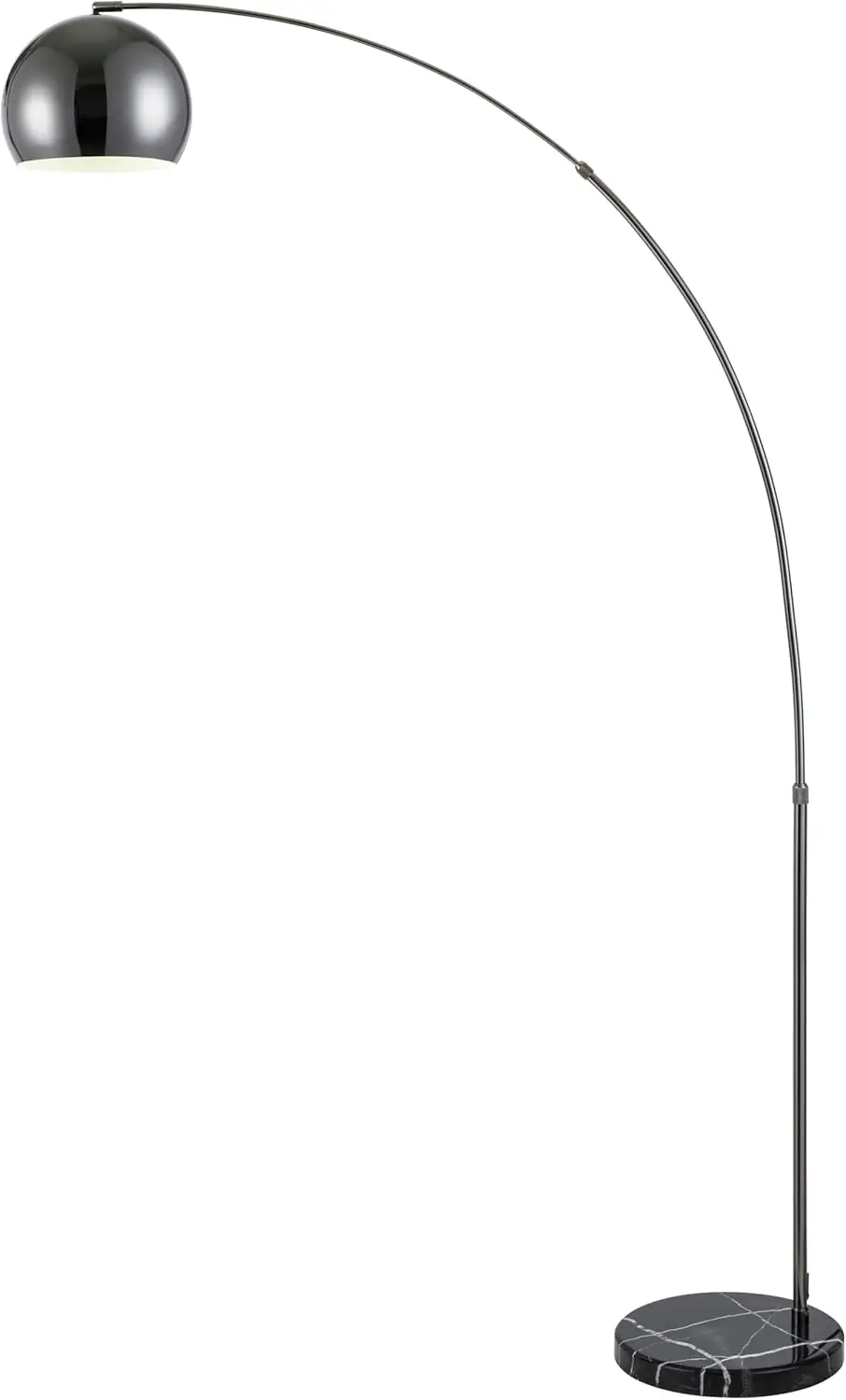
Investment Considerations
Understanding price-to-quality relationships helps you allocate your budget effectively:
– Entry-level arc lamps ($100-250) typically offer basic functionality with simpler materials
– Mid-range options ($250-500) provide better mechanical components and more substantial construction
– Premium selections ($500+) offer superior materials, craftsmanship, and often include designer pedigrees
– Features worth the investment include stable bases, smooth adjustment mechanisms, and quality dimming controls
The Interior Ivy collection offers options across these price ranges, with each carefully evaluated for performance and quality. When making your selection, the complete arc floor lamp guide recommends prioritizing stability, light quality, and adjustment functionality over purely decorative features.
For long-term satisfaction, invest in the highest quality you can afford in the top arc lamp features buying guide, focusing particularly on mechanical components that will withstand regular use. A well-constructed arc lamp often becomes a lasting design element that transfers successfully between different homes and interior styles over many years.
Expert Design Techniques: Elevating Spaces with Strategic Arc Lamp Styling
Professional designers employ specific techniques that transform arc lamps from mere lighting fixtures into integral design elements. These approaches can elevate your space’s visual impact while maximizing functional benefits.
Professional Styling Approaches
Strategic placement creates visual interest beyond basic illumination:
– Position arc lamps to create visual pathways that guide the eye through a space
– Use the lamp’s sweeping curve to echo architectural features like arched doorways or vaulted ceilings
– Create intentional negative space around the lamp to highlight its sculptural quality
– Balance the lamp’s visual weight against other prominent design elements
Designer Tip: In open floor plans, position an arc lamp at the junction between functional areas, allowing its curve to visually connect the spaces while its light pool helps define different activity zones.
Problem-Solving with Arc Lamps
Beyond aesthetics, arc lamps offer creative solutions for common design challenges:
– In rooms lacking overhead lighting, position arc lamps to provide centered illumination over gathering areas
– For spaces with low ceilings, select lamps with horizontal rather than vertical emphasis to create an illusion of width
– Define conversational areas in open floor plans by centering an arc lamp over seating arrangements
– Illuminate awkward corners by positioning the lamp base in dead space while extending the arm over usable areas
Large oversized arc floor lamps make particularly strong architectural statements, creating dramatic focal points that can define entire rooms. Their substantial scale makes them natural anchors for seating arrangements in larger spaces.
Advanced Aesthetic Techniques
Refined styling approaches enhance an arc lamp’s integration:
– Create intentional vignettes by combining the lamp with complementary artwork and accessories
– Position arc lamps to cast interesting shadow patterns that add visual texture to walls or floors
– Adjust styling seasonally—pair with lush plants in summer or cozy textiles in winter
– For special occasions, temporarily position arc lamps to highlight gathering areas or featured elements
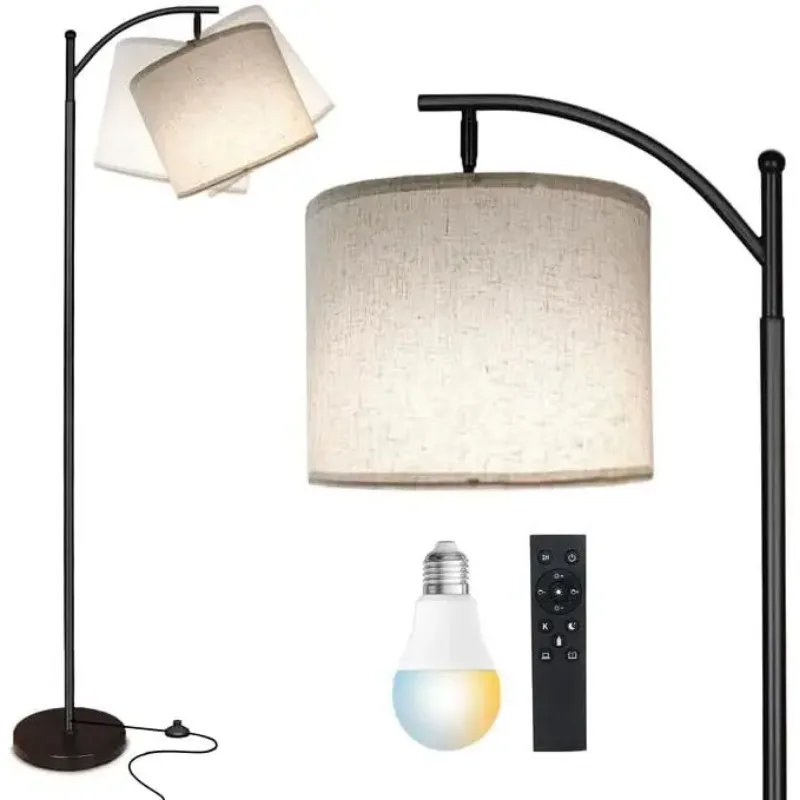
Designer Tip: When photographing your space for documentation or social media, position arc lamps to create visual frames around key design elements. Their curved forms create natural compositional lines that guide viewers’ attention to focal points.
By implementing these professional techniques, you transform arc lamps from functional objects into design elements that significantly enhance your space’s overall aesthetic impact and livability.
Common Mistakes to Avoid: Preventing Design Missteps
Even with the best intentions, certain errors can diminish the impact of arc lamps or create functional problems. Being aware of these common mistakes helps ensure successful integration into your space.
- Hazardous Positioning
Placing arc lamps in high-traffic pathways creates both safety hazards and functional issues. Position bases at least 12-16 inches away from main walkways, ensuring the arc itself doesn’t intersect areas where people regularly stand or walk. Similarly, insufficient clearance height—particularly in spaces with taller family members—can lead to head collisions and potential damage to the lamp. Always ensure at least 7 feet of clearance beneath the lowest point of the lamp’s arm.
- Blocking Natural Light
Positioning arc lamps directly in front of windows obstructs valuable natural light and creates competing light sources during daytime hours. Instead, place lamps perpendicular to windows where they complement rather than compete with natural illumination. This arrangement also prevents the lamp from appearing as a dark silhouette against the brighter window background.
- Scale Miscalculations
Undersized lamps in expansive spaces create visual imbalance—a common issue when selecting arc lamps based solely on price rather than appropriate dimensions. As a general guideline, rooms with ceilings higher than 9 feet benefit from lamps with arcs reaching at least 70-80 inches high. Conversely, oversized lamps dominating small rooms create cramped environments and uncomfortable proportions. In spaces under 150 square feet, select more modest arc lamps with heights under 70 inches.
- Light Quality Issues
Selecting improper bulbs for intended purposes significantly diminishes functionality. The modern arc floor lamp guide recommends matching bulb specifications to specific activities: higher lumens (800-1200) with cooler temperatures (4000-5000K) for reading or detail work, and moderate lumens (400-800) with warmer temperatures (2700-3000K) for ambient evening lighting.
- Competing Statement Pieces
Placing multiple dominant design elements in close proximity creates visual competition that diminishes the impact of each piece. When incorporating an arc lamp with significant visual presence, balance it against other statement pieces by providing adequate visual space between them. This doesn’t require minimal decoration—rather, it means creating intentional focal point hierarchy.
- Poor Cord Management
Exposed, tangled cords instantly diminish the sophisticated effect of an arc lamp. Plan cord routing from the beginning, considering whether to conceal cords under rugs (with appropriate safety backing), behind furniture, or using discreet cord management solutions.
- Incorrect Proportion With Furniture
When choosing between single and multi-arm arc lamps, consider the size and arrangement of the furniture below. Single-arm lamps work well centered over focused areas like reading chairs or small dining tables, while multi-arm options better serve larger seating arrangements or rectangular dining tables. Ensure the lamp’s reach appropriately matches the furniture dimensions below it.
Avoiding these common mistakes helps ensure your arc lamp enhances rather than detracts from your overall design vision.
Arc Lamp Maintenance: Preserving Beauty and Function
Proper maintenance ensures your arc lamp remains both beautiful and functional for years to come. Different materials and mechanisms require specific care approaches to preserve their quality and operation.
Material-Specific Cleaning Protocols
- Metal Finishes:
- Chrome/stainless steel: Wipe with microfiber cloth and glass cleaner; avoid abrasive cleaners that scratch
- Brass: Clean with mild soap solution; apply specialized brass polish quarterly; consider lacquered brass for reduced maintenance
Black metal: Dust regularly; remove fingerprints with diluted dish soap; avoid chemical cleaners that may affect finish
Marble Bases:
- Dust frequently with soft cloth
- Clean with stone-specific cleaner that won’t etch surface
- Apply marble sealer annually to prevent staining
- Use coasters under drinks placed near base
Clean spills immediately to prevent absorption
Lamp Shades:
- Fabric shades: Vacuum gently with brush attachment; spot clean with mild soap
- Glass shades: Clean with standard glass cleaner
- Metal shades: Wipe interior with microfiber cloth to remove dust that diminishes light output
Mechanical Maintenance
- Apply small amount of silicone lubricant to joints annually
- Tighten any loose connections promptly
- Check counterbalance tension periodically; adjust according to manufacturer guidelines
- Inspect wiring annually for wear, particularly at bend points
Troubleshooting Common Issues
- Stability Problems: If the lamp becomes wobbly, check and tighten all connection points; ensure the base sits on a completely level surface
- Light Flickering: Check bulb is properly seated; inspect socket for corrosion; ensure electrical connections are secure
- Balance Issues: If the arm won’t stay positioned, the counterbalance mechanism may need adjustment or repair
- Switch Problems: Inconsistent operation often indicates internal switch wear; consider professional replacement if cleaning doesn’t resolve
Vintage arc floor lamps often require special maintenance considerations due to their age and original materials. For these pieces, consider consulting lighting specialists familiar with vintage components before attempting repairs or modifications that might affect their value or safety.
With proper care, quality arc lamps can maintain both beauty and functionality for decades, often becoming cherished design elements that transition through multiple homes and style evolutions.
Is an Arc Lamp Right for Your Space? Making the Final Decision
Before making your final selection, consider these key questions to determine if an arc lamp aligns with your specific space and needs.
Do arc lamps work in spaces with low ceilings?
While traditional arc lamps require minimum 8-foot ceilings, options exist for lower spaces. Look for models with shallower arcs that extend horizontally rather than vertically. Adjustable designs that can be configured to different heights also offer solutions for challenging ceiling heights. The key measurement is ensuring at least 6.5 feet of clearance from floor to the bottom of the shade where people walk.
Are arc lamps practical for homes with children or pets?
Arc lamps can work in family homes with some considerations. Select models with particularly stable bases (marble or weighted metal) that resist tipping. Position bases away from play areas and running paths. Some households find corner placement, where the base is somewhat protected by surrounding furniture, works well. Cable management becomes especially important to prevent tripping or pulling.
Can arc lamps provide sufficient task lighting for detailed work?
Arc lamps can excel at task lighting when properly specified. For detail work, look for models with directional shades and higher lumen output (800-1200). Adjustable arms allow precise positioning over work surfaces. For activities requiring accurate color perception (artwork, crafting), select bulbs with high CRI ratings (90+) that render colors faithfully.
Available floor space parameters:
Minimum base clearance: 14×14 inches for standard bases
Additional consideration for arm swing if adjustable models will be repositioned regularly
Ceiling height limitations:
– 8+ feet: Most arc lamp styles suitable
– 7-8 feet: Select models with horizontal emphasis or adjustable height
– Under 7 feet: Consider alternative lighting styles
Existing lighting infrastructure:
Arc lamps work particularly well in rooms lacking overhead lighting or where ceiling fixtures are improperly positioned for furniture layouts. They complement rather than replace general ambient lighting in most spaces.
If an arc lamp isn’t ideal for your particular situation, consider these alternatives:
– Cantilever table lamps provide similar extended reach from a smaller footprint
– Wall-mounted swing-arm lamps offer arc-like functionality without floor space requirements
– Tripod floor lamps provide architectural interest with more vertical orientation
– Retro arc lamps with smaller proportions offer similar aesthetic impact in reduced scale
The perfect lighting solution balances your aesthetic preferences with your space’s practical requirements. By carefully considering these factors, you’ll determine whether an arc lamp represents the ideal lighting solution for your unique environment.

